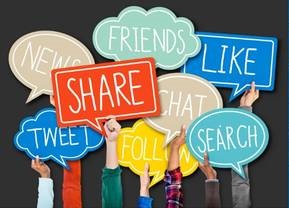What Would LinkedIn Wear to a Party? How Dress Codes Can Help You Understand What’s Appropriate for Social Media
It is hard to know sometimes which social media option is right for the occasion. Thinking of social media in terms of dress codes might help. In summary: LinkedIn: Business casual or business wear depending on your career objectives. Facebook: Casual, for personal pages. Twitter: Casual to business causal, depending on your followers and purpose. Instagram: Casual The point is, each of these main social media options are used for different purposes. Keeping those purposes in mind can help make sure you are posting appropriate content and, well, not wearing flip flops to a LinkedIn party. Here’s a little bit more detail to help you decide which social media platform is best for the occasion.  LinkedIn is the more grown up of the social media options. At the very least business casual is required and, depending on the level of networking you want to do, business wear may be required. On LinkedIn, you have the opportunity to share with the world your professional accomplishments and education. Personal attributes can be shared, but only as they relate to your work ethic and character (e.g., “I climbed Mt. Everest” or “I volunteer at the local homeless shelter”). Your career accomplishments, goals and professional philosophy are the norm on LinkedIn. Personal Facebook pages are far more casual than LinkedIn, so enjoy your flip flops and shorts. On Facebook, you post far more frequently than on LinkedIn and celebrate daily happenings right along your support for causes and life-changing updates such as births, deaths, graduations, and marriages. Keep in mind, however, that prospective and current employers can also look into what you have been up to and come to a conclusion about your character. So, while “wearing flip flops” is acceptable, be careful that what you post doesn’t reflect poorly on your character. Twitter is one part news, one part community. Originally used as a way to quickly and regularly get news out in just 140 characters, it had the feel of a beat reporter on the scene. Casual and immediate were the norm. As time went on, the use of hashtags also allowed for a community of people to come together in the moment and share information about evolving news, a cause, or an event. Following and being followed on twitter also strengthened this sense of “togetherness” around common interests. So, in the case of Twitter, the “dress code” is generally more casual, but ultimately dictated by your community of followers and the tone of tweets. The newer kid on the block is Instagram, a mobile photo-sharing, video-sharing, and social networking app. Initially billed as an alternative to Facebook (but now owned by Facebook), it was used then mostly by teenagers who wanted privacy from their parents who were also on Facebook. Instagram has since grown in popularity by all types of users. Like Facebook, your photos or short videos are seen by followers and you can see the posts by those you follow. Knowing what to “wear” to each social media gathering can help ensure you are using social media correctly, which matters when the world (including potential employers and colleagues) are watching.
LinkedIn is the more grown up of the social media options. At the very least business casual is required and, depending on the level of networking you want to do, business wear may be required. On LinkedIn, you have the opportunity to share with the world your professional accomplishments and education. Personal attributes can be shared, but only as they relate to your work ethic and character (e.g., “I climbed Mt. Everest” or “I volunteer at the local homeless shelter”). Your career accomplishments, goals and professional philosophy are the norm on LinkedIn. Personal Facebook pages are far more casual than LinkedIn, so enjoy your flip flops and shorts. On Facebook, you post far more frequently than on LinkedIn and celebrate daily happenings right along your support for causes and life-changing updates such as births, deaths, graduations, and marriages. Keep in mind, however, that prospective and current employers can also look into what you have been up to and come to a conclusion about your character. So, while “wearing flip flops” is acceptable, be careful that what you post doesn’t reflect poorly on your character. Twitter is one part news, one part community. Originally used as a way to quickly and regularly get news out in just 140 characters, it had the feel of a beat reporter on the scene. Casual and immediate were the norm. As time went on, the use of hashtags also allowed for a community of people to come together in the moment and share information about evolving news, a cause, or an event. Following and being followed on twitter also strengthened this sense of “togetherness” around common interests. So, in the case of Twitter, the “dress code” is generally more casual, but ultimately dictated by your community of followers and the tone of tweets. The newer kid on the block is Instagram, a mobile photo-sharing, video-sharing, and social networking app. Initially billed as an alternative to Facebook (but now owned by Facebook), it was used then mostly by teenagers who wanted privacy from their parents who were also on Facebook. Instagram has since grown in popularity by all types of users. Like Facebook, your photos or short videos are seen by followers and you can see the posts by those you follow. Knowing what to “wear” to each social media gathering can help ensure you are using social media correctly, which matters when the world (including potential employers and colleagues) are watching.
https://www.positivehealthwellness.com/
Resources: http://www.prdaily.com/Main/Articles/12_types_of_social_media_personalities_14296.aspx http://www.cnet.com/news/why-teens-are-tiring-of-facebook/ http://www.prdaily.com/Main/Articles/12_types_of_social_media_personalities_14296.aspx http://www.adweek.com/news/advertising-branding/new-social-stratosphere-who-using-facebook-twitter-pinterest-tumblr-and-instagram-2015-and-beyond-1622 http://webtrends.about.com/od/prof4/a/What-Is-Instagram-Wiki.htm




